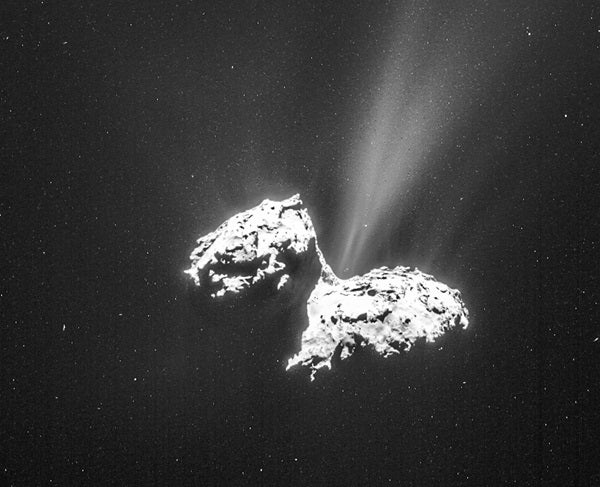There’s a saying from legendary comet hunter David Levy that Mark Moretto knows by heart: “Comets are like cats: They have tails and do precisely what they want.”
Moretto, 27, has been working to understand comets and their unpredictable behavior ever since he was in high school, when he began doing research with University of Maryland comet scientists Michael A’Hearn and Lori Feaga. At that time, the pair were team members on NASA’s Deep Impact mission, which flew by Comet 9P/Tempel 1 in 2005. Moretto analyzed Tempel 1’s outgassing jets — work that received the National Young Astronomer Award from the Astronomical League.
Today, Moretto is a graduate student at the University of Colorado in Boulder, where he continues to study active comets — now helping spacecraft to safely orbit them.
The challenge is that an active comet is constantly acting out, spewing tons of gas and dust into its temporary atmosphere, or coma. Inside it, a probe is buffeted by complex aerodynamic forces that are difficult to model. “There’s a lot of inherent ambiguity associated with the behavior of gas and dust in the coma,” says Moretto, which in turn creates “huge uncertainties.”
What he learns will aid not only in research missions but also planetary-defense efforts, scouting comets on a collision course with Earth — in which case “we could be operating very close to it for a long period of time.” Better understanding how spacecraft behave in long-term comet orbits would also be vital for future mission concepts like mining.
Currently, no extended-duration comet missions are greenlit — ESA’s Comet Interceptor is being built for a 2029 launch, but it’s a flyby mission. However, there are other possibilities for Moretto to dig into some hands-on work. “The current planetary decadal survey highlights a comet sample-return mission as one of their desired missions for the coming decade,” Moretto notes. “That would be great to work on.”
Make sure to explore our full list of 25 rising stars in astronomy. Check back each week for a new profile!
To get the latest astronomical news and observing content delivered directly to your door, subscribe to Astronomy magazine today!











